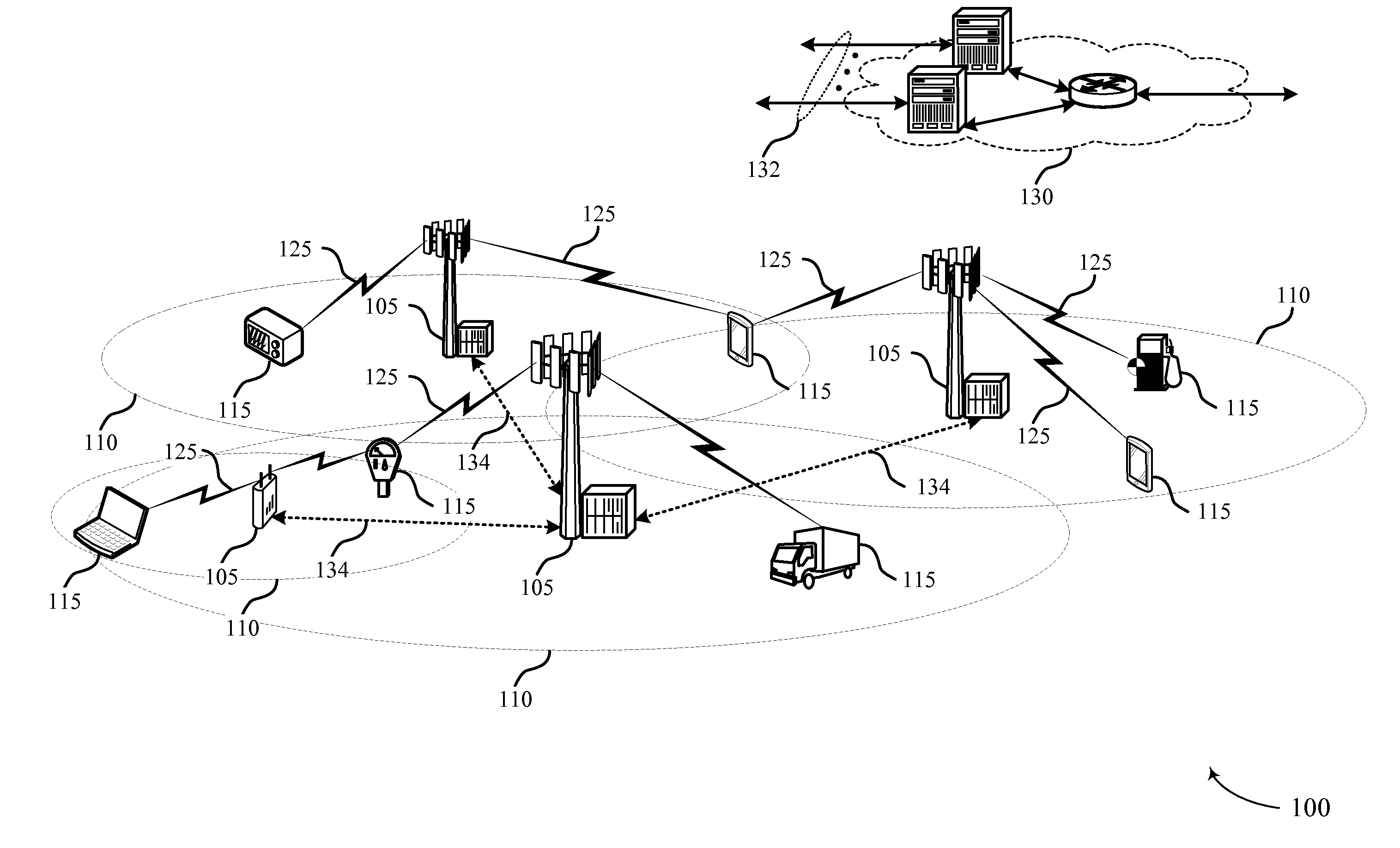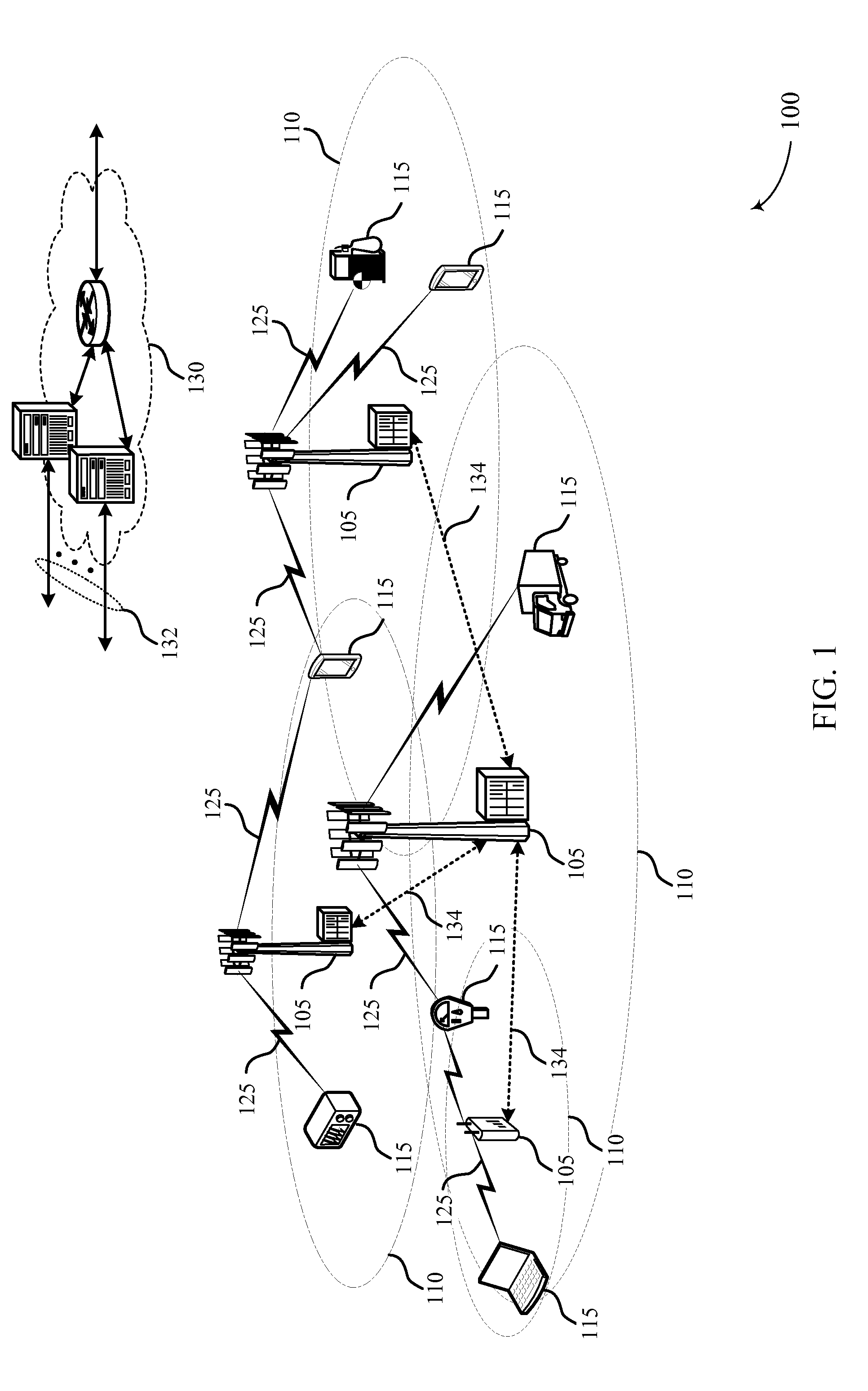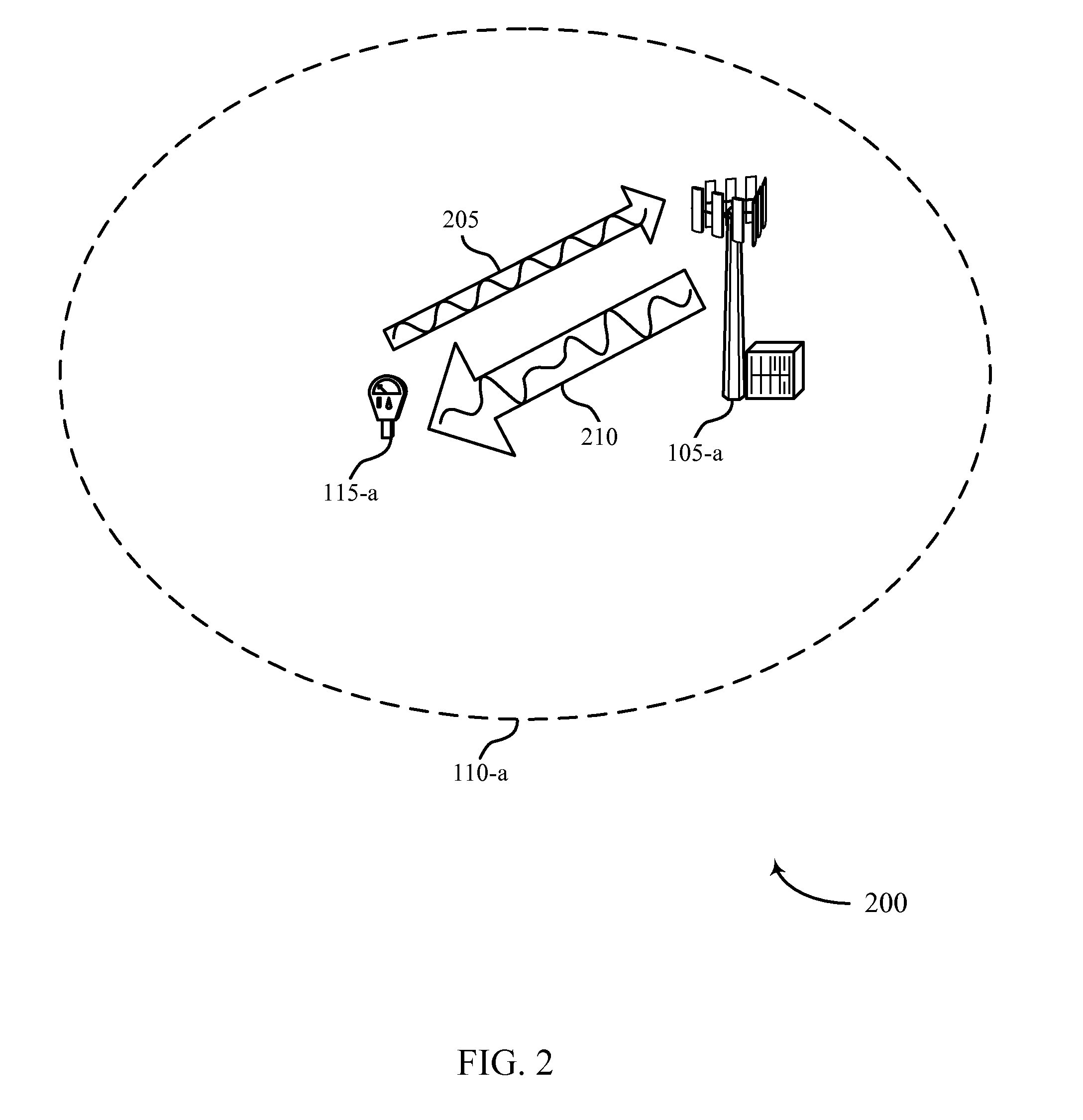Flexible gaussian minimum shift keying in a cellular internet of things system
a cellular internet of things and minimum shift keying technology, applied in the field of wireless communication, can solve the problems of significant draining of the available power resources of the device, significant affecting the power usage of the device, and high power usage and/or limited range in some conditions
- Summary
- Abstract
- Description
- Claims
- Application Information
AI Technical Summary
Benefits of technology
Problems solved by technology
Method used
Image
Examples
Embodiment Construction
[0034]A network of automated devices which communicate wirelessly may, in some cases, be referred to as the internet of things (IoT). Devices which communicate over the IoT network (e.g., machine type communication (MTC) devices) may include automated meters, sensors, and the like. In some instances, the automated devices may have relatively low throughput applications (e.g., a water level sensor sending an update to a base station). There may be a number of wireless communication systems available for use by the automated devices, including cellular systems operating in licensed spectrum. However, cellular systems may be designed for devices which use high through-put applications. Devices that operate according to low throughput conditions (e.g., infrequent and small data transfers) may present design considerations different from those associated with higher through-put devices. For example, an automated device may be designed to operate for long periods of time without battery r...
PUM
 Login to View More
Login to View More Abstract
Description
Claims
Application Information
 Login to View More
Login to View More - R&D
- Intellectual Property
- Life Sciences
- Materials
- Tech Scout
- Unparalleled Data Quality
- Higher Quality Content
- 60% Fewer Hallucinations
Browse by: Latest US Patents, China's latest patents, Technical Efficacy Thesaurus, Application Domain, Technology Topic, Popular Technical Reports.
© 2025 PatSnap. All rights reserved.Legal|Privacy policy|Modern Slavery Act Transparency Statement|Sitemap|About US| Contact US: help@patsnap.com



